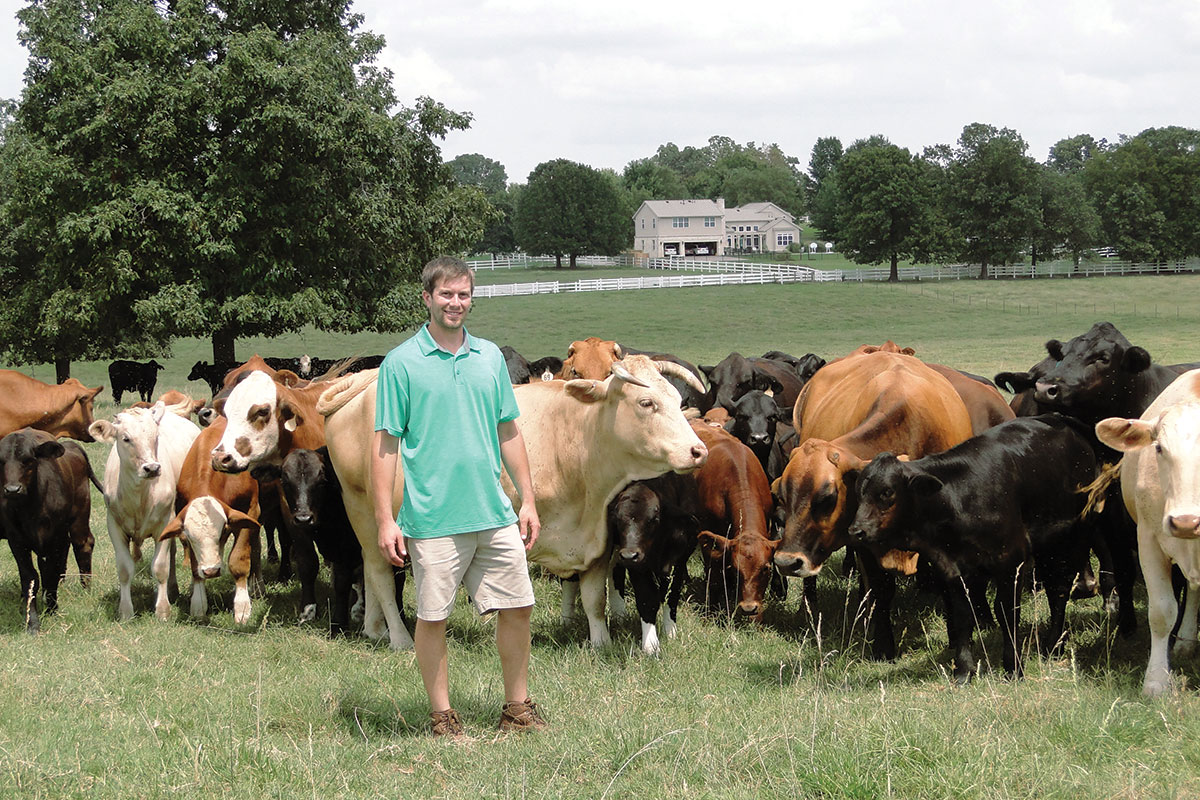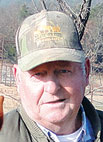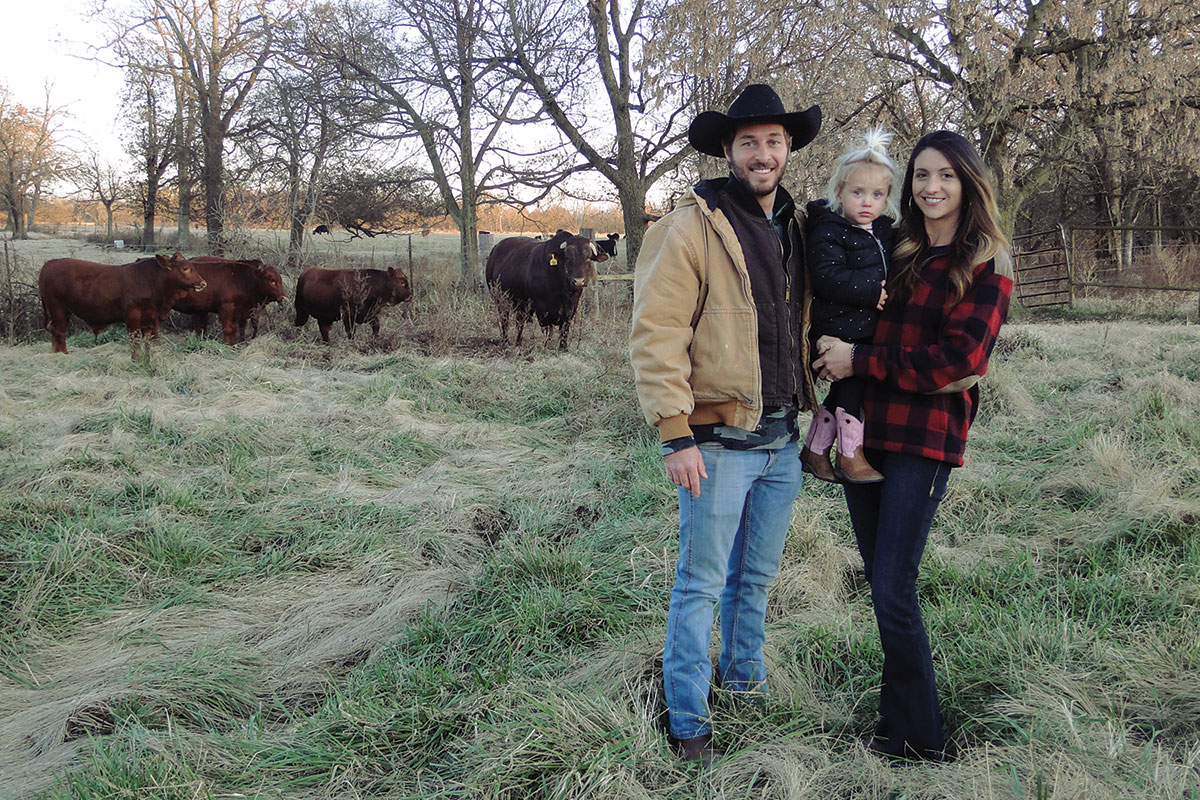
Aaron Artripe prefers Beefmaster cattle and rented pasture
“I’m just old enough to be invited to the grown-up table of cattle producers,” quipped 30-year-old Aaron Artripe of Rogers, Ark. “What I do isn’t typical but it’s working well, and when I grow up in another 10 years with a lot more experience and data behind me, perhaps my kind of diversification will have value for others.”
Though both Aaron and his wife Megan were raised in the country, they were town kids. Aaron’s off-the-farm job is with the National Park Service, while Megan works as a labor and delivery nurse.
Aaron credits Chad Burkett of Springdale High School for igniting his interest in agriculture after Aaron selected one of Chad’s classes as an elective. After graduating in 2007, Aaron went to Arkansas Tech with the intention of becoming a veterinarian and majored in ag business and animal science. This met the requirements for veterinary school while giving him flexibility since the agribusiness part could translate into many areas. What Aaron learned in college combined with an association with James Skelton of Springdale, Ark., pushed him in two complementary directions. His education, especially a semester-long internship at the Pea Ridge National Military Park in restoring native grasses, revealed his deep passion for the complex interrelationships in selective management of grasses and legumes for optimum grazing efficiency.
One of Aaron’s best friends was Bryce Skelton, a college roommate and one of James Skelton’s nephews. James is best known for being a leading producer of the composite Beefmaster breed and for pioneering the use of highly detailed feedlot data to refine genetics. The combination of specific cows and bulls spearhead herd development through data gathered from highly efficient feedlot calves. Aaron also saw the docility of James’ bulls. Aaron can sit on any of his own reclining bulls.
“It seems like every two years I have an outstanding bull calf that I retain for future breeding, which makes detailed breeding records essential,” Aaron said. “However, while bull selection is the easiest way to improve performance and genetics, cows are the other half of the story and need equal attention. One goal is to market replacement heifers to producers who want date-driven females by using feedlot steer data.”
Aaron thought sending cattle to Kansas where he could get conversion data would complicate his health procedures, but has found the process pretty simple. He vaccinates twice per year so all animals are always protected and worms with an injectable supported by pour on and/or worming blocks.
While Aaron respects the Angus breed and its tremendously successful marketing program, he believes Beefmaster Breeders United is the most progressive in terms of feed conversion and research. He cites the organization’s current investigation of reducing methane emissions as an example. Like all beef producers, Aaron believes profit is the end goal , with maintaining a cow herd taking up the lion share of overhead.
“We need more emphasis on cows combine with low cost of total ownership as well as a method to put hybrid vigor into calf crops. Further, retaining ownership in the feedlot and selling on the hook by the pound on a grading scale diminishes the hide color issue,” Aaron explained.
Aaron’s belief in heterosis has fostered the purchase of other breeds of cattle in addition to his Beefmasters, though he remains completely dedicated to using feedlot data, just as James does.
Aaron and Megan had to start from scratch. At this point they own 160 acres and lease an additional 400. The land supports a commercial herd of 120 heavily Beefmaster-influenced cows which he hopes to increase to 150 this year. The acreage is also sufficient for him to set aside ungrazed hay fields, where he is beginning to apply his native grass and legume philosophy. Aaron firmly believes in stockpiling two years of hay at all times because of the unpredictability of weather trends. While he prefers fertilizing with litter, it is rarely available. Consequently, he combines weed control with commercial fertilizer which produces a soaked commercial fertilizer mix that has worked very well so far.
Aaron and Megan are currently retaining all of their heifers and see almost every animal daily, even though the leased land spreads over four counties.
“People shook their head and thought I was crazy because my land was so spread out,” Aaron admitted. “I leased land through a wide variety of contacts, some of whom were not even involved in agriculture. Nonetheless location diversity proved important during the 2012 drought because my land furthest north near the Missouri state line was dry and I was able to lean my operation heavily on other locations.”
Aaron has found several factors critical to success. First, he believes it’s important for a man to search for the best woman he can find and credits Megan as the essential element in their success. Second is taking advantage of unexpected opportunities in unexpected places and weaving them together into a workable unit whether those opportunities concern land or animals or advice from proven producers. Third is planning ahead to combat Murphy’s Law by over stocking bulls and expanding leased land before unexpected problems arise. Finally, Aaron highly recommends looking at perspective calf purchases when the calves are 4 to 5 months old and then again after weaning so a developmental comparison can be made before purchase, a practice especially important with prospective herd sires.
In a system as fluid as Aaron and Megan’s, their agricultural future is naturally more ambiguous than others while paradoxically more stable in terms of outside influences such as weather, disease, or land productivity. They plan to add AI and ET relatively soon, while always continuing to search for more land. Aaron also plans to eventually become active in the cattlemen’s association and the Beefmaster Breeders United as a way of influencing best practices. Right now, however, he’s having trouble finding time to sleep.
“Of course my dream is to have a herd of 15 head that manicure my lawn for me while I’m sitting on the porch,” Aaron said with a laugh. “The reality, however, is quite different. As our operation matures, we plan to eventually own a thousand head or more depending upon land availability.”






